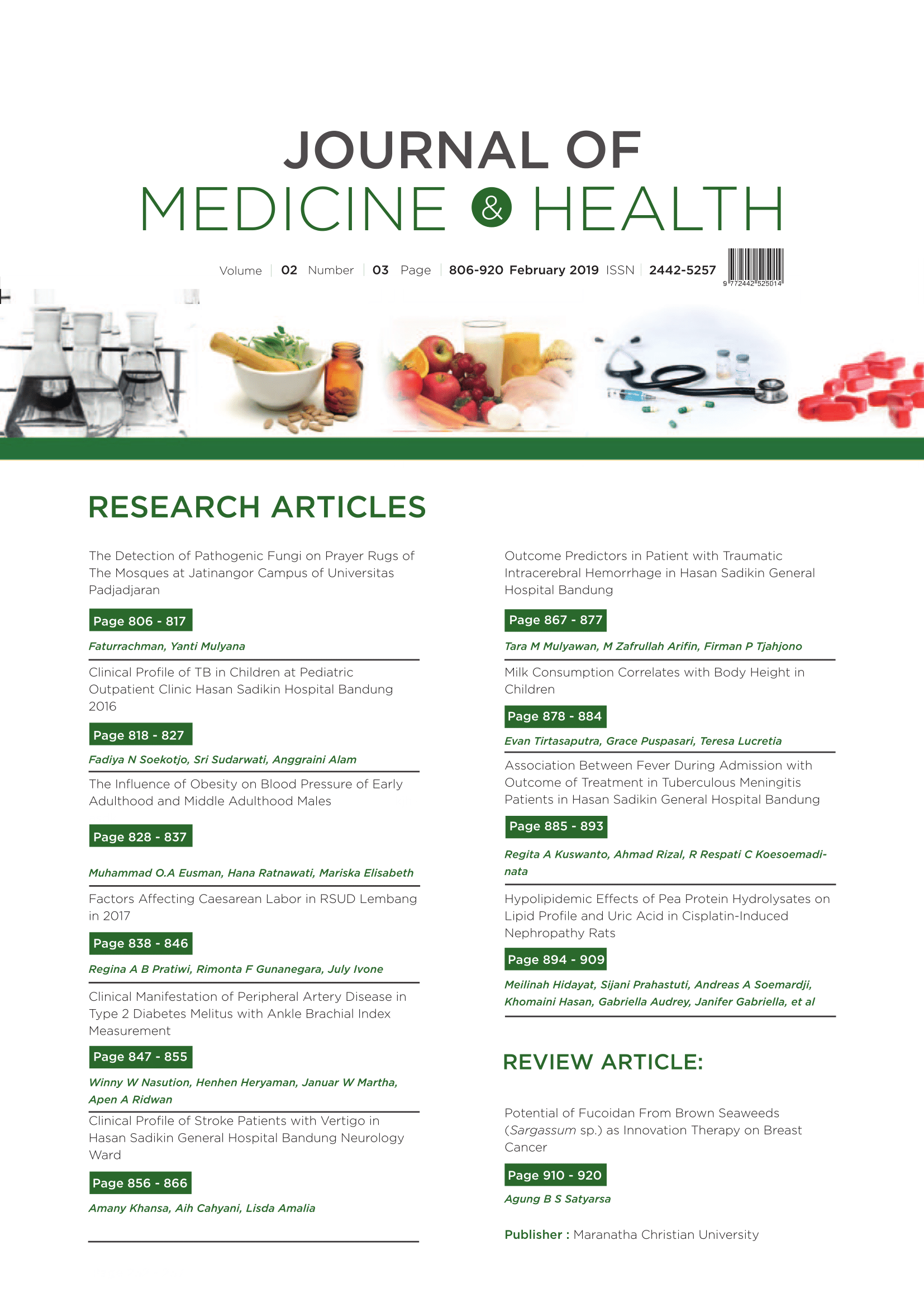Outcome Predictors in Patient with Traumatic Intracerebral Hemorrhage in Hasan Sadikin General Hospital Bandung
DOI:
https://doi.org/10.28932/jmh.v2i3.1231Abstract
Predictions about patient outcomes can help doctors make decisions. Intracerebral hemorrhage acccompanied by brain injury can increase mortality but specific studies on outcomes of patients with traumatic intracerebral hemorrhage are still rare. The purpose of this study was to determine the factors that influence the outcome of traumatic intracerebral hemorrhage patients in the RSHS period from January to December 2017. This is an observational study with cross sectional method, categorical comparative analytic. The study involved 60 traumatic intracerebral hemorrhages aged ? 15 years who were hospitalized in RSHS. The data was analyzed univariately and bivariately using Chi Square statistical test, Eta correlation test and contingency coefficient. The results showed age (p = 0.003), GCS scores assessed at admission (p <0.001), and the presence or absence of other brain hemorrhages (p = 0.050) significantly affected the patient's outcome. Gender (p = 0.932), mechanism of injury (p = 0.739), and pupillary response (p = 0.056) did not affect the outcome significantly. In conclusion, the factors that influence the outcome of traumatic intracerebral hemorrhage patients are age, GCS score, and presence or absence of other brain hemorrhages. Keywords: intracerebral hemorrhage, trauma, predictors, outcomeDownloads
Download data is not yet available.
Downloads
Published
2019-02-28
How to Cite
1.
Mulyawan TM, Arifin MZ, Tjahjono FP. Outcome Predictors in Patient with Traumatic Intracerebral Hemorrhage in Hasan Sadikin General Hospital Bandung. J. Med. Health [Internet]. 2019Feb.28 [cited 2026Jan.2];2(3). Available from: http://114.7.153.31/index.php/jmh/article/view/1231
Issue
Section
Articles
License
Authors who publish with this journal agree to the following terms:
- Authors retain the copyright and grant the journal right of first publication with the work
simultaneously licensed under a Creative Commons Attribution-NonCommercial 4.0 International License that allows others to share the work with an acknowledgement of the work's authorship and initial publication in this journal. - Authors are able to enter into separate, additional contractual arrangements for the nonexclusive distribution of the journal's published version of the work (e.g., post it to an institutional repository or publish it in a book), with an acknowledgement of its initial publication in this journal.
 This work is licensed under a Creative Commons Attribution-NonCommercial 4.0 International License.
This work is licensed under a Creative Commons Attribution-NonCommercial 4.0 International License.

















